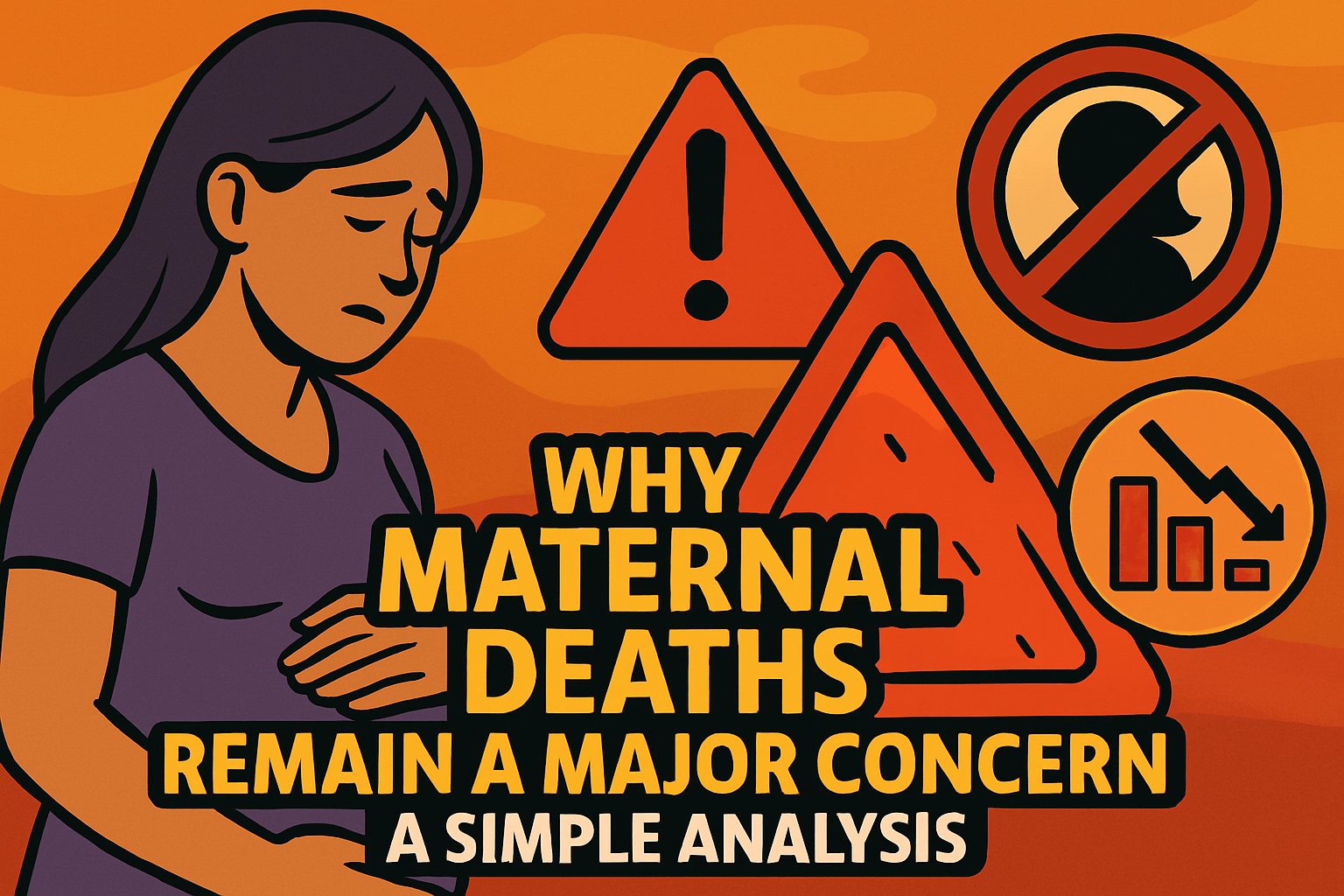
Maternal deaths are still a big problem in many parts of the world, including India. A recent report by the United Nations (UN) shows that India ranks second in the number of maternal deaths globally, even though the country has made progress in reducing these deaths over the years. This issue needs attention because most of these deaths can be prevented with proper care and support.
Table of Contents
What the Maternal Deaths Report Says

The report, titled “Trends in Maternal Mortality 2000-2023,” highlights some alarming facts:
- In 2023, 19,000 women died in India due to pregnancy-related causes.
- Globally, about 2.6 lakh women died during pregnancy or childbirth, which means 700 women die every day .
- Nigeria had the highest number of maternal deaths, while India and the Democratic Republic of Congo shared the second spot, each accounting for 7.2% of global deaths .
Dr. Tedros Adhanom Ghebreyesus, the Director-General of the World Health Organization (WHO), called maternal mortality rates “unacceptably high.” He stressed that solutions exist to prevent and treat complications that cause most of these deaths.
Why Do Women Die During Pregnancy?
Most maternal deaths happen due to complications during or after pregnancy. Here are the main reasons:
- Severe bleeding : Especially after childbirth.
- Infections : Often occur after delivery if proper hygiene is not maintained.
- High blood pressure : A condition called preeclampsia can harm both the mother and the baby.
- Complications during delivery : Such as obstructed labor.
- Unsafe abortions : When women do not have access to safe abortion services.
These problems can often be treated or avoided with good healthcare, skilled doctors, and proper facilities. However, many women still lack access to such care.
Social Factors That Increase Risks
Maternal deaths are not just about medical issues; they are also linked to social factors:
- Poverty : Poor families may not afford healthcare.
- Lack of education : Women who are less educated may not know about safe practices during pregnancy.
- Gender inequality : In some places, women and girls are not valued equally, limiting their access to healthcare.
- Limited healthcare services : Many areas do not have enough hospitals, doctors, or medicines.
All these factors make it harder for women to get the help they need during pregnancy and childbirth.
India’s Progress and Challenges
India has made significant progress in reducing maternal deaths:
- The Maternal Mortality Ratio (MMR) , which measures the number of maternal deaths per 1 lakh births, dropped from 362 in 2000 to 80 in 2023 .
- The total number of deaths fell from 24,000 in 2000 to 19,000 in 2023 , showing a 78% decline over two decades.
However, challenges remain. India’s large population (145 crore people) makes it harder to ensure everyone gets proper care. For comparison:
- China, which has a similar population, saw only 1,400 maternal deaths in 2023.
- Nigeria, with a much smaller population (23.26 crore), had more maternal deaths than India.
This shows that while India has improved, there is still work to do to match countries like China.
Impact of COVID-19
The pandemic worsened the situation. In 2021:
- An additional 40,000 women died due to pregnancy or childbirth.
- Total global deaths rose to 3.22 lakh , up from 2.82 lakh the previous year.
The increase was caused by:
- Direct health complications from COVID-19.
- Disruptions in healthcare services, like fewer hospital visits and shortages of doctors and medicines.
How Can We Prevent These Deaths?
To reduce maternal deaths, we need to focus on simple yet effective steps:
- Access to contraception : Women should have the right to plan their pregnancies.
- Safe abortion services : Unsafe abortions are a major cause of death.
- Quality healthcare : All women need access to skilled doctors and nurses during pregnancy and childbirth.
- Postnatal care : Care after delivery is crucial for both the mother and the baby.
- Education : Teaching women about pregnancy risks and safe practices can save lives.
The WHO emphasizes that skilled professionals must attend all births . Timely treatment can save both the mother and the newborn.
Important Facts for Competitive Exams
Here are some key points aspirants should remember:
- Global maternal deaths in 2023 : 2.6 lakh.
- India’s maternal deaths in 2023 : 19,000.
- Top country for maternal deaths : Nigeria.
- India’s MMR in 2023 : 80 (down from 362 in 2000).
- Impact of COVID-19 : 40,000 extra deaths in 2021.
- WHO Director-General : Dr. Tedros Adhanom Ghebreyesus.
🔹 For more insightful articles and updates on current affairs, feel free to explore our website through this link.
Maternal deaths are a preventable tragedy. While India has made great strides in reducing these numbers, there is still a long way to go. By improving healthcare, addressing social inequalities, and ensuring access to quality services, we can save thousands of lives every year. As Dr. Tedros said, solutions exist—what we need now is action.
Let us work together to make pregnancy safer for every woman, everywhere.
Key Takeaways for Competitive Exams
Here are some important facts aspirants should remember:
- Corruption Perceptions Index (CPI) 2024 : India ranked 96th out of 180 countries .
- World Bank Logistics Performance Index (LPI) : India ranked 22nd in International Shipments out of 139 countries.
- Henley Passport Index 2025 : India ranked 80th globally.
- Maternal Mortality Ratio (MMR) : India reduced MMR from 362 in 2000 to 80 in 2023 .
